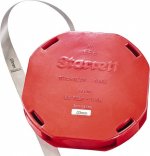Made some progress on the stock today. Slowly removing wood from both locations the recoil lug (carried out first) and receiver flat have made contact when fitted. As expected, the clearance between the rear tang and stock decreased so that was also worked on to maintain that ~0.010" of relief.
With everything still tight, I checked the force needed to separate the stock and and the barrel at the muzzle. It barely took any force, I could separate the two by pushing against the barrel with my thumb while holding the barrel with my other hand. If I had to guess it probably took less and pound of force. Also used one of those luggage scales for travel and it had similar results (I'm aware they're probably inaccurate to a degree).
I decided to inlet the length of the barrel and noticed it was still making contact at the previously pictured location near the chamber, probably due to the fitting of the receiver flat. Those were relieved and by following Claven2's advice on lowering the receiver flat to increase pressure and by removing small amounts of material, I was able to achieve a pound of force on the scale to separate the two. I'll be continue this process while marking the flat and lug to ensure they remain seated.
Of course I can't make a post without asking a few questions so here goes! FYI, the bedding at the muzzle has not been touched up to this point.
From the tip of the stock, how much of the barrel is supposed to make contact with the stock to create this pressure? The number I saw online is one inch The picture on the right shows where the contact points are at this moment.
I can continue working on the flat but if too much of the forward length of the barrel is contacting, should I relieve those areas to stay within that one inch point of contact?
Cheers.

With everything still tight, I checked the force needed to separate the stock and and the barrel at the muzzle. It barely took any force, I could separate the two by pushing against the barrel with my thumb while holding the barrel with my other hand. If I had to guess it probably took less and pound of force. Also used one of those luggage scales for travel and it had similar results (I'm aware they're probably inaccurate to a degree).
I decided to inlet the length of the barrel and noticed it was still making contact at the previously pictured location near the chamber, probably due to the fitting of the receiver flat. Those were relieved and by following Claven2's advice on lowering the receiver flat to increase pressure and by removing small amounts of material, I was able to achieve a pound of force on the scale to separate the two. I'll be continue this process while marking the flat and lug to ensure they remain seated.
Of course I can't make a post without asking a few questions so here goes! FYI, the bedding at the muzzle has not been touched up to this point.
From the tip of the stock, how much of the barrel is supposed to make contact with the stock to create this pressure? The number I saw online is one inch The picture on the right shows where the contact points are at this moment.
I can continue working on the flat but if too much of the forward length of the barrel is contacting, should I relieve those areas to stay within that one inch point of contact?
Cheers.

Last edited:





























































































